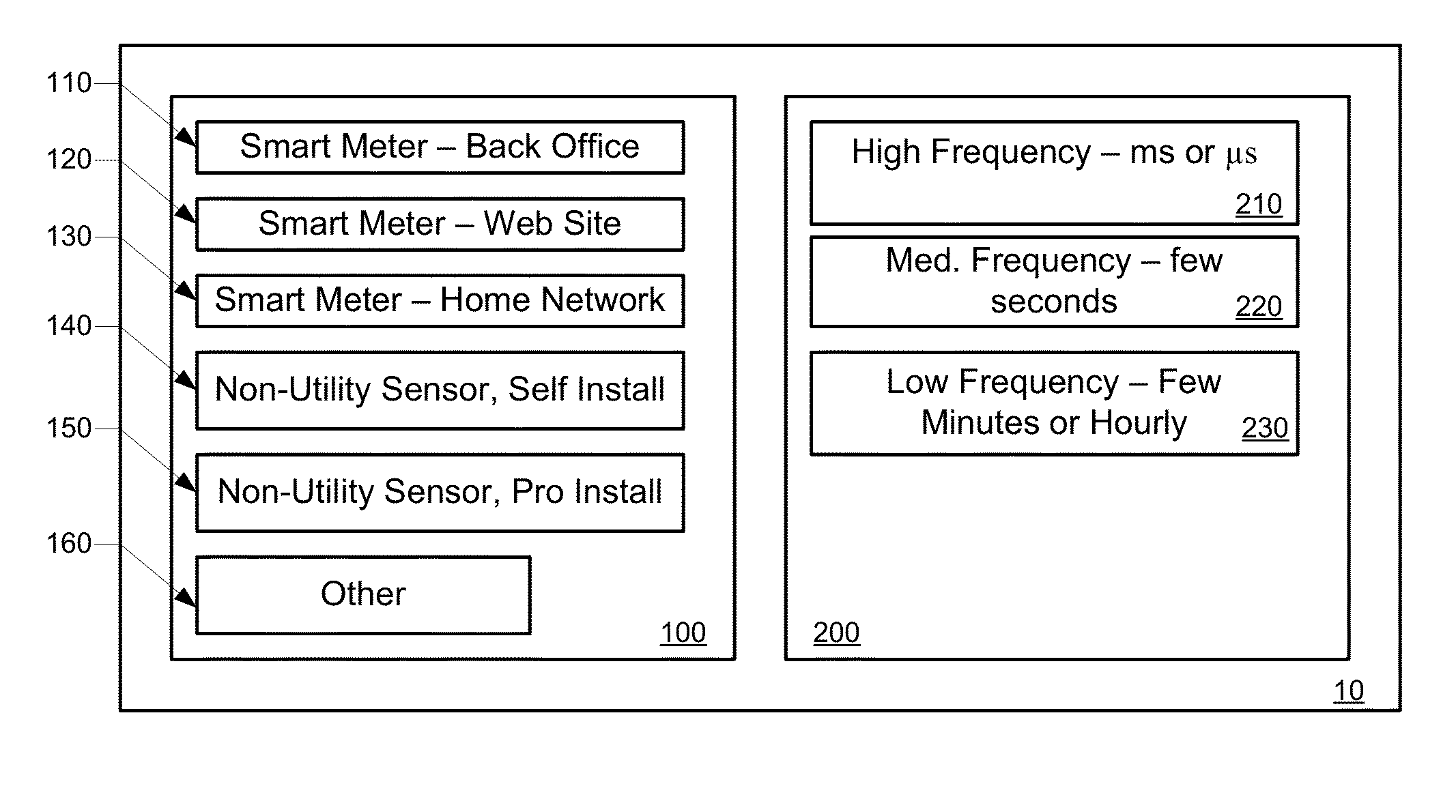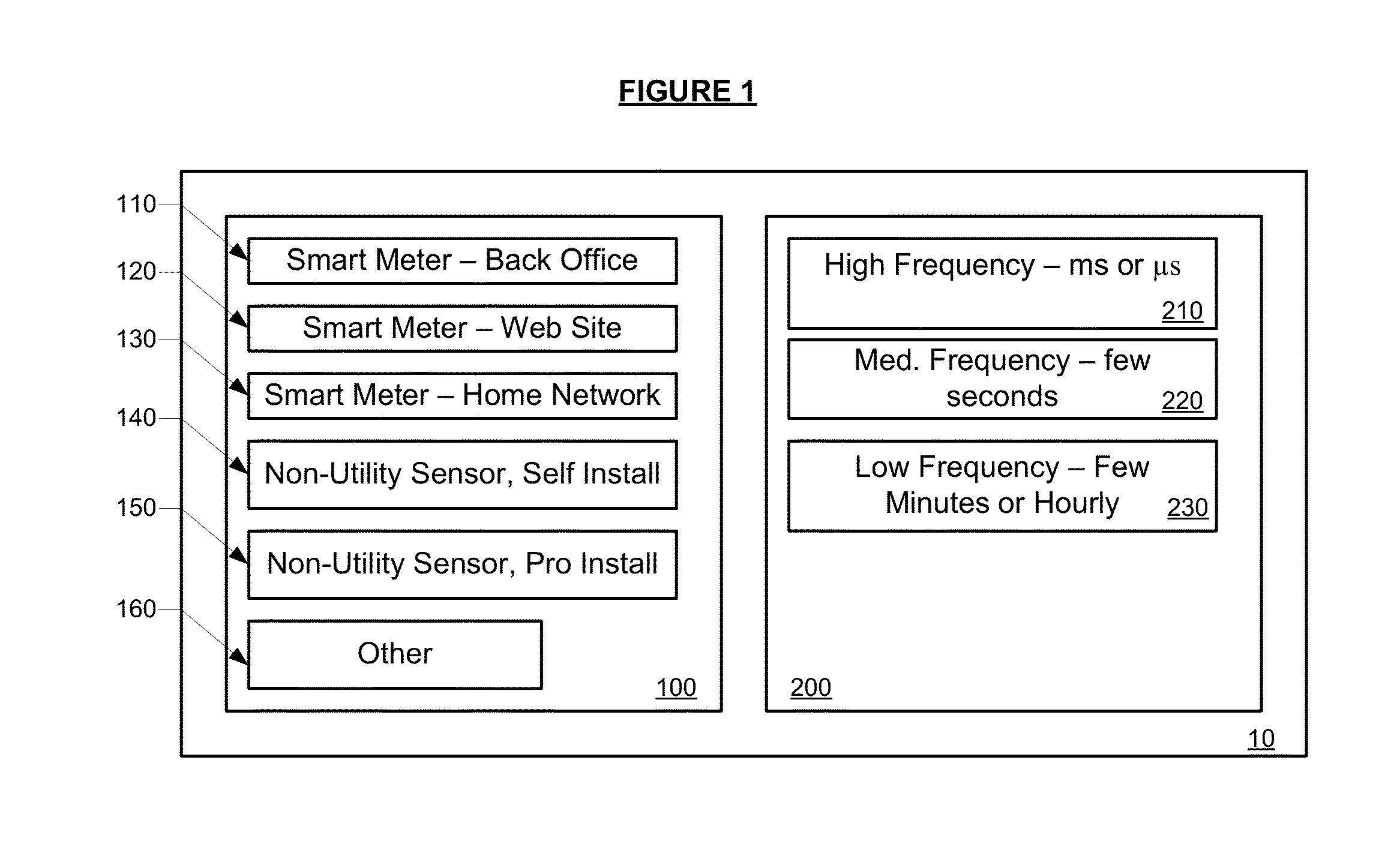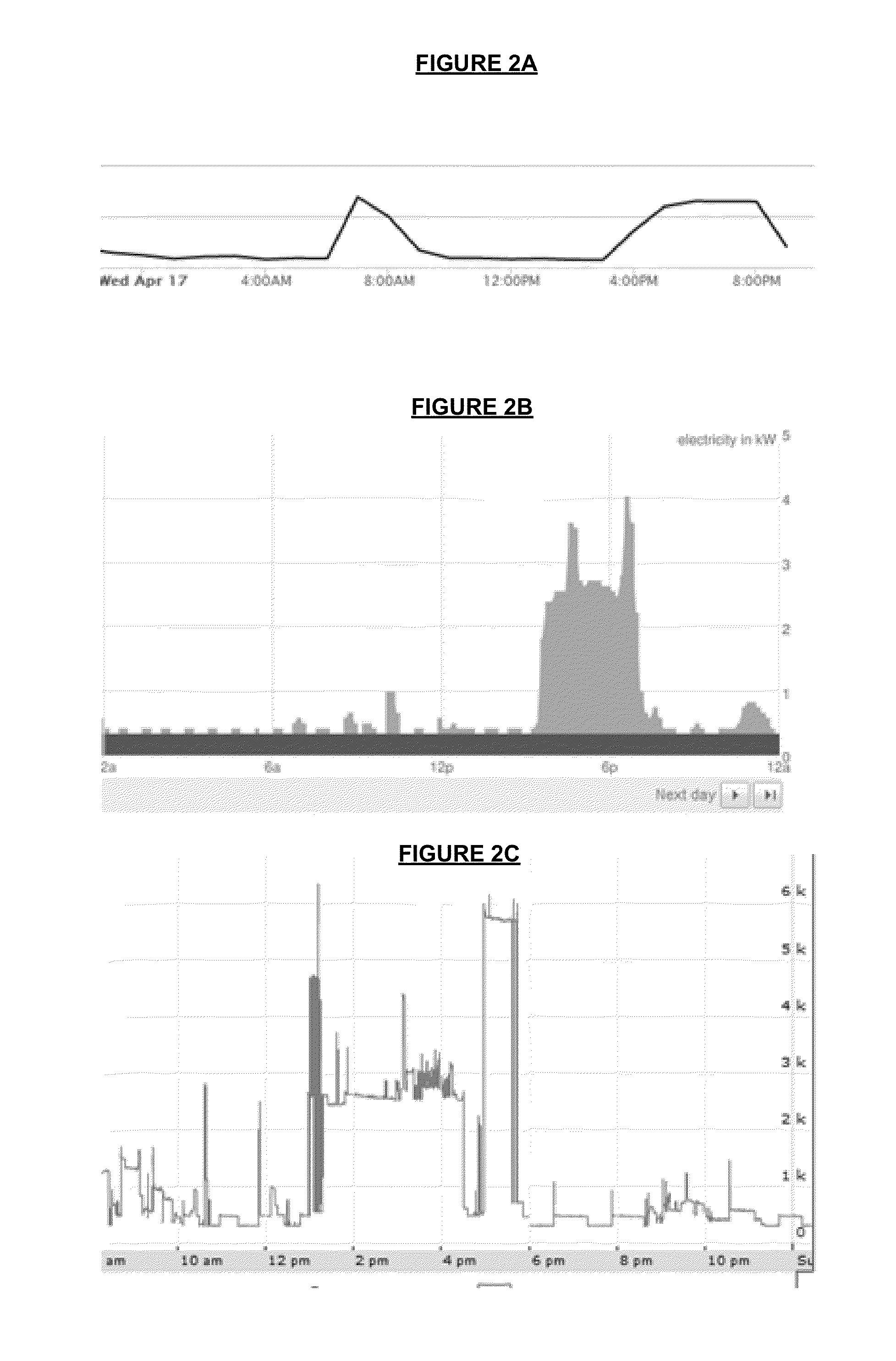Energy Disaggregation Techniques for Low Resolution Whole-House Energy Consumption Data
a technology of energy consumption and energy disaggregation, applied in the field of non-intrusive appliance load monitoring systems and methods, can solve the problems of not providing high-resolution energy consumption data, unable to provide near real-time information that may immediately empower users to modify their energy usage, and limited assistance in modifying present behavior and usage, so as to increase the accuracy of identified incidences
- Summary
- Abstract
- Description
- Claims
- Application Information
AI Technical Summary
Benefits of technology
Problems solved by technology
Method used
Image
Examples
Embodiment Construction
[0025]The matters exemplified in this description are provided to assist in a comprehensive understanding of various exemplary embodiments disclosed with reference to the accompanying figures. Accordingly, those of ordinary skill in the art will recognize that various changes and modifications of the exemplary embodiments described herein can be made without departing from the spirit and scope of the claimed invention. Descriptions of well-known functions and constructions are omitted for clarity and conciseness. Moreover, as used herein, the singular may be interpreted in the plural, and alternately, any term in the plural may be interpreted to be in the singular. Reference figures preceded with “S” (e.g., S100) indicates a step.
[0026]Note that while the preceding and following disclosure primarily discusses monitoring and reporting electric usage, it is fully contemplated by the applicants that such systems and methods disclosed herein may also be used to monitor other types of en...
PUM
 Login to View More
Login to View More Abstract
Description
Claims
Application Information
 Login to View More
Login to View More - R&D
- Intellectual Property
- Life Sciences
- Materials
- Tech Scout
- Unparalleled Data Quality
- Higher Quality Content
- 60% Fewer Hallucinations
Browse by: Latest US Patents, China's latest patents, Technical Efficacy Thesaurus, Application Domain, Technology Topic, Popular Technical Reports.
© 2025 PatSnap. All rights reserved.Legal|Privacy policy|Modern Slavery Act Transparency Statement|Sitemap|About US| Contact US: help@patsnap.com



